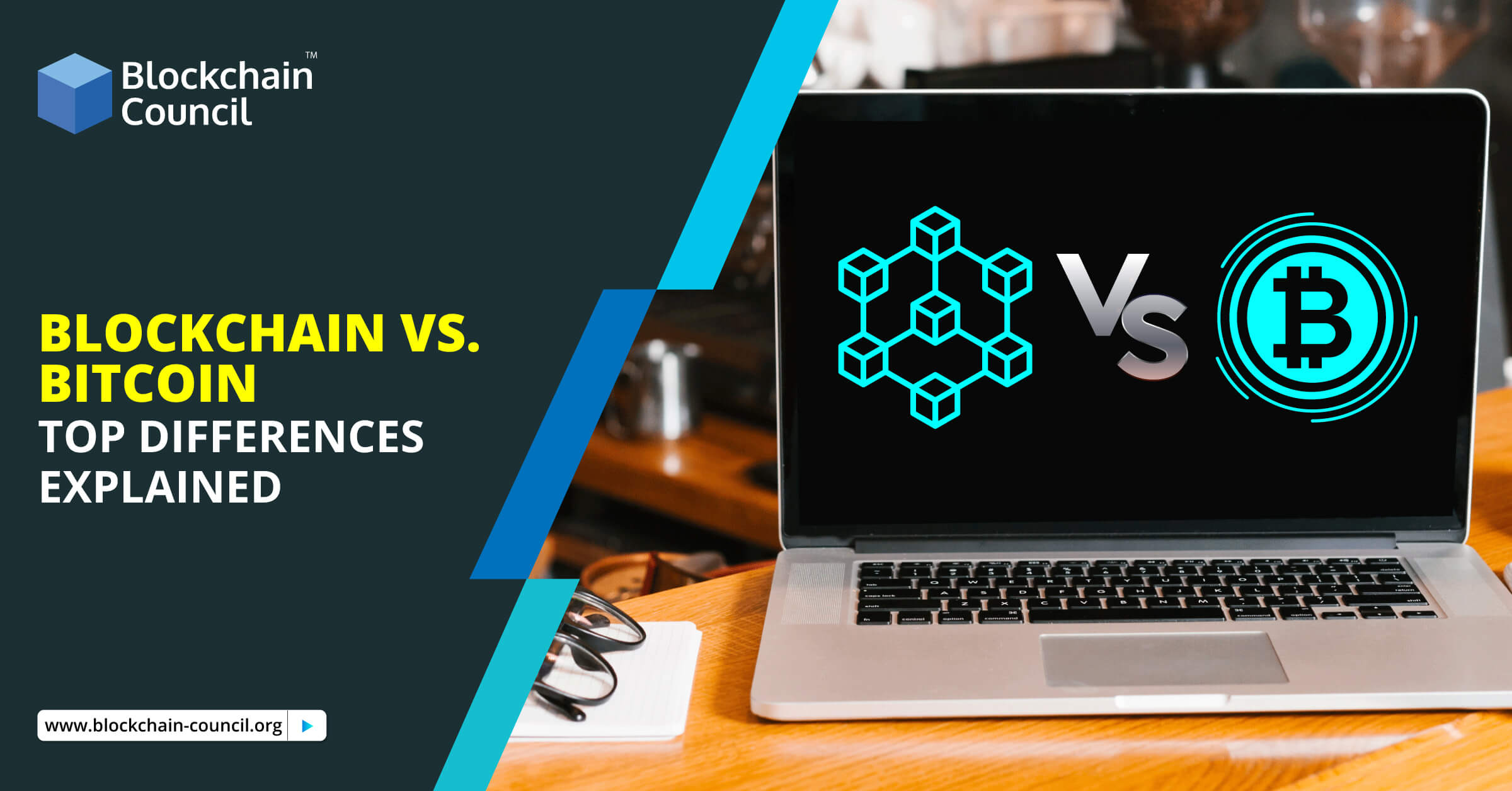
- Toshendra Kumar Sharma
- March 21, 2022

People have been conflating bitcoin and blockchain, probably because they both are closely related. Blockchain was included as part of the same package when Bitcoin was released as open-source code. However, novices commonly confuse “Bitcoin” and “blockchain” since Bitcoin was the first blockchain application. This is where the confusion started.
Blockchain technology has the power to change the way data is organized and commerce is conducted in the digital world. Blockchain, which originated as a foundation for supporting Bitcoin, has demonstrated a level of flexibility and security that has prompted many industries and governments to take notice and begin adopting it.
With that in mind, it makes sense to look into becoming a Blockchain developer if you want to start a career in blockchain development that has plenty of space for growth and resides on cutting-edge new technology that is just getting started.
Although blockchain technology has already been extended to other businesses, some ambiguity still exists. But before we delve into exploring the differences between Blockchain and Bitcoin, let us first briefly introduce the two.
Blockchain: An Overview
A peer-to-peer distributed ledger technology, blockchain, ensures that the data is dispersed across several computers and hence decentralized. Anything saved on the blockchain network cannot be updated or modified easily. This feature makes the blockchain network the most secure network available.
Furthermore, unlike conventional systems where a single central administrator handles transactions, this technology allows participants to conduct transactions digitally without the requirement for a central authority.
The first blockchain example was Bitcoin. Blockchain is the technology that supports the Bitcoin cryptocurrency, and it was built specifically for it.
Almost every industry is presently being transformed by blockchain technology. There are a variety of real-world applications for blockchain technology, including supply chain, finance, governance, etc.
Bitcoin: An Overview
Satoshi Nakamoto invented Bitcoin in 2008, and it is a sort of uncontrolled digital money. It was created to bypass government currency regulations and simplify internet transactions by eliminating third-party payment processing intermediaries. It is also known as a “cryptocurrency.”
A secure means to handle bitcoin transactions is required.
Bitcoin deploys distributed ledger technology to monitor and record trade and transactions. The distributed ledger technology (DLT) is implemented on a node-to-node network that is open and anonymous in nature.
The underlying technology that keeps the Bitcoin transaction record up to date is called blockchain.
The Larger Applications of Blockchain
People took a long time to recognize that blockchain may be used for much more than money networks since blockchain and Bitcoin are so tightly related. Many people believe that blockchain will completely transform the way we do business like the internet before it.
Here are some examples of blockchain’s use outside of Bitcoin and other cryptocurrencies:
-
Incorporating smart contracts:
Because of Bitcoin, we already know how useful blockchain is for facilitating digital transactions, but smart contracts may also be used to establish digital relationships. A smart contract allows automated payments to be delivered whenever the contract requirements have been met, saving time and perhaps reducing differences or resolving disputes.
-
Managing a distributed, open system of record:
A blockchain-based platform is the best answer for keeping a long-term, safe, and transparent record of assets (for example, land rights) that all stakeholders can access securely.
-
Monitoring the supply network:
Blockchain allows users to trace ownership information for commodities all the way back to their origin. Diamond manufacturer De Beers, for example, has begun to utilize the blockchain to trace gems from the mine to the final client. Anyone who wishes to ensure that their diamonds are conflict-free will have access to an open and comprehensive record.
-
Proof of insurance:
The Nationwide Insurance Company intends to use blockchain to deliver proof-of-insurance data. The technology would allow police officers, insurers, and customers to check insurance coverage in real time, potentially speeding up the claims process.
Bitcoin is a rather closed system that values privacy. Even when we locate the transactions in the ledger, bitcoin vs. blockchain are recorded in numeric codes that people do not comprehend, which is why it isn’t easy to progress.
On the other hand, because blockchain has been used in a variety of sectors, it must adhere to the company’s laws and regulations, such as anti-money laundering and knowing your customer. As a result, it clearly reveals all transactions, and the public has complete access to the ledger, increasing organizations’ faith in the blockchain.
Bitcoin is a digital currency that is used to reduce transaction fees and time when transacting across borders. The blockchain is a distributed ledger that allows for peer-to-peer transactions in one of the most secure ecosystems possible. In addition, blockchain transactions are made public to ensure transparency.
| Differentiating Characteristic | Blockchain | Bitcoin |
| Goal | To provide an economic, secure, and safe peer-to-peer transaction ecosystem. | To make transactions easier and faster without imposing too many limitations from the government. |
| Exchange | Anything from money to stock ownership rights may be effortlessly transferred using blockchain. | Bitcoin can only be used to trade as a currency. |
| Adaptability | Blockchain is flexible and adapts easily to changes, hence it can offer services to various industries | Bitcoin focuses on decreasing influencer costs and shortening transaction times, but it is less adaptable. |
| Future Growth | Because the blockchain is more adaptable to changes, it has the support of many major corporations. | Bitcoin has a restricted application. |
| Transparency | Blockchain is used by a variety of enterprises, and thus, it must adhere to KYC and other regulations. As a result, blockchain is extremely transparent. | Although we can see the transactions on the ledger, they are merely numbers in no specific sequence, as Bitcoin favours anonymity. |
Conclusion
Bitcoin and blockchain both have their own set of advantages. In this digital era, it’s inevitable that more individuals will look at how they may benefit from bitcoin and blockchain. In addition, Bitcoin and blockchain will make people’s life simpler by facilitating millions upon millions of cross-border transactions every day.
However, as blockchain technology advances, it now has more applications apart from bitcoin. Although Bitcoin was the first cryptocurrency to debut, many more have since been developed and utilized. As a result, bitcoin’s popularity and importance have significantly decreased.
Recently, there has been a surge in blockchain courses. As a result, many institutions are offering in-demand courses with training and certifications. Blockchain council is one such platform where you will find some of the best blockchain certification courses.
If you want to keep up with the trends of blockchain industry, join our communities on Discord, Reddit and Telegram.





































































 Guides
Guides News
News Blockchain
Blockchain Cryptocurrency
& Digital Assets
Cryptocurrency
& Digital Assets Web3
Web3 Metaverse & NFTs
Metaverse & NFTs
